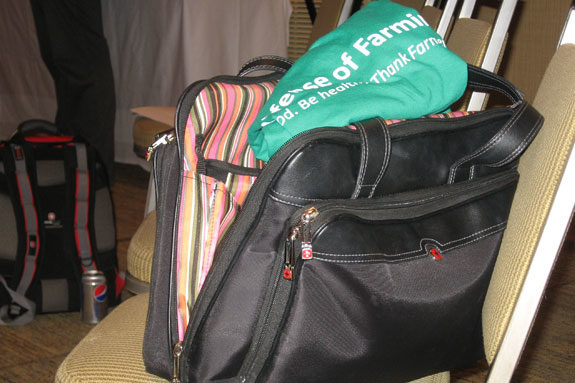Attention all dairy and livestock producers: It’s time to step up, advocate for animal agriculture and defend modern production practices. The ninth annual Animal Agriculture Alliance (AAA) Stakeholders Summit was held April 28 and 29 in Arlington, Virginia.
Although the event featured a full agenda of diverse speakers – from a university epidemiologist to a U.S. Congressman and from a police commander to an online journalist – the message was consistent from one speaker to the next.
Today’s producers can’t take a passive approach to defending U.S. animal agriculture. They can’t sit back and wait to answer the tough questions with complex science. They can’t let the anti-agriculture agendas of the Humane Society of the United States (HSUS) and similar organizations dictate consumers’ opinions.
Today’s producers need to speak up and take an active role in advocating for the industry. And, as HumaneWatch.org Editor David Martosko said, they need to do so “frequently, publicly and loudly.”
The first step, as outlined by acclaimed author Wesley Smith, is to understand the public debate that’s taking place in mainstream media. Producers actively engaged in animal agriculture are committed to providing excellent care for their livestock. That’s animal welfare. Animal rights is a completely different concept, according to Smith, a senior fellow in human rights and bioethics with The Discovery Institute. The key is to be completely transparent in your commitment to animal welfare and, at the same time, dispel the “hyperemotional” myths planted in consumers’ minds by HSUS.
On the animal welfare side of the issue, it’s important for all producers to be proactive in animal wellbeing initiatives. For dairy producers, that means certifying operations through the National Milk Producers Federation’s Farmers Assuring Responsible Management program. For more information, visit www.nationaldairyfarm.com.
The next tool in a producers’ animal welfare arsenal is social media. Sarah Hubbart, AAA communications coordinator, highlighted several statistics to prove social media’s power in reaching consumers:
• 60 percent of Facebook users are over age 25 and the fastest growing demographic is women over 45
• 75 percent of Americans get news forwarded to them through e-mail or social media
• Twitter gains 300,000 new users every day
• 50 million tweets enter cyberspace daily
Hubbart said the best way to get started using social media is to simply log on and learn as you go. She said, no matter your age or computer aptitude, you can grasp the technology in a short amount of time. Hubbart demonstrated that, within 30 seconds, you can log into Twitter, write a message and share your ideas with hundreds of followers.
When it comes to taking on animal rights agendas, it’s important to stay ahead of the game and act before the activists can. Cargill Director of Government Relations and Corporate Affairs Director Mike Zumwinkle said anti-agriculture organizations are purposely targeting state legislatures instead of federal government and they’re doing that for a reason.
“Things move rather slowly in D.C.,” said Zumwinkle. “In the states, they move very rapidly.”
That means that state commodity and agriculture groups need to join together to actively educate consumers. Marjorie Stieve, Vita Plus marketing services manager, offered the strategies Wisconsin producers and industry partners used “In Defense of Farming” when agenda journalist Michael Pollan visited the University of Wisconsin-Madison campus. This included wearing green t-shirts to stand out at Pollan’s main speaking event, engaging in consumer conversations about modern production practices, and offering reporters “the other half of the story” in event coverage. Stieve reminded attendees that this is a “marathon, not a sprint” and said Wisconsin farmers will continue to be industry advocates through In Defense of Farming.
In addition to sharing these key positive messages, David Martosko said animal agriculture needs to expose animal rights groups for what they really are:
• “Reposition the opposition.”
HSUS is not an animal welfare organization, “they’re just a richer PETA.”
• “Diminish assumed and self-anointed ‘moral authority’.”
Follow the money trail and question the way the “factory fundraiser” uses the money it receives.
• “Reframe the issues.”
Show that HSUS isn’t concerned with animal welfare, but rather animal rights. Talk about the number of local jobs that would be lost in rural communities if animal agriculture were banned. Bring up the fact that economically-depressed areas would not be able to afford food if HSUS reached its goal of eliminating animal agriculture.
Martosko reiterated, “You can’t win a football game without a defense and an offense.” PD
PHOTO: All Animal Agriculture Alliance Stakeholders Summit attendees departed Washington D.C. with green t-shirts in their briefcases. Photo courtesy of Vita Plus.
Read more coverage from the Animal Agriculture Alliance by visiting the Vita Plus website.




